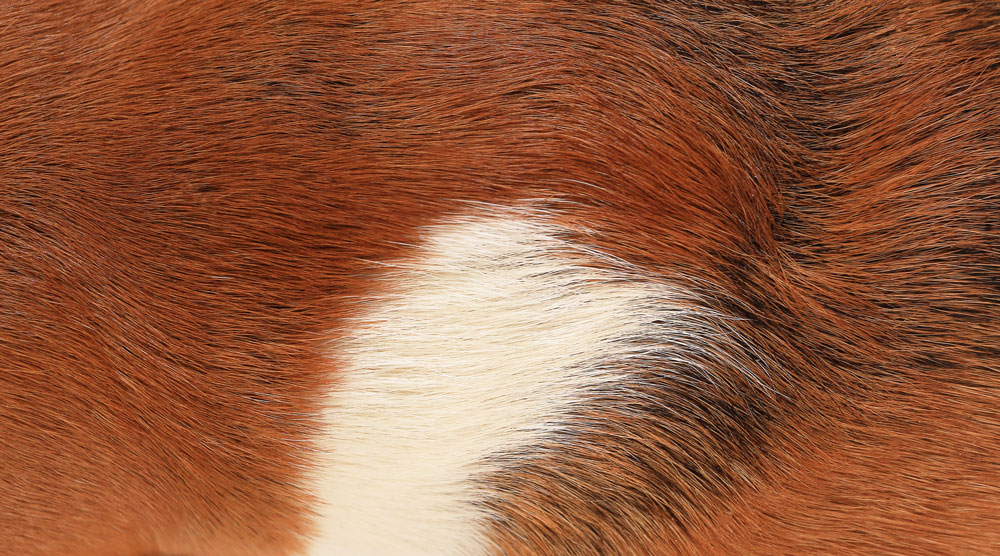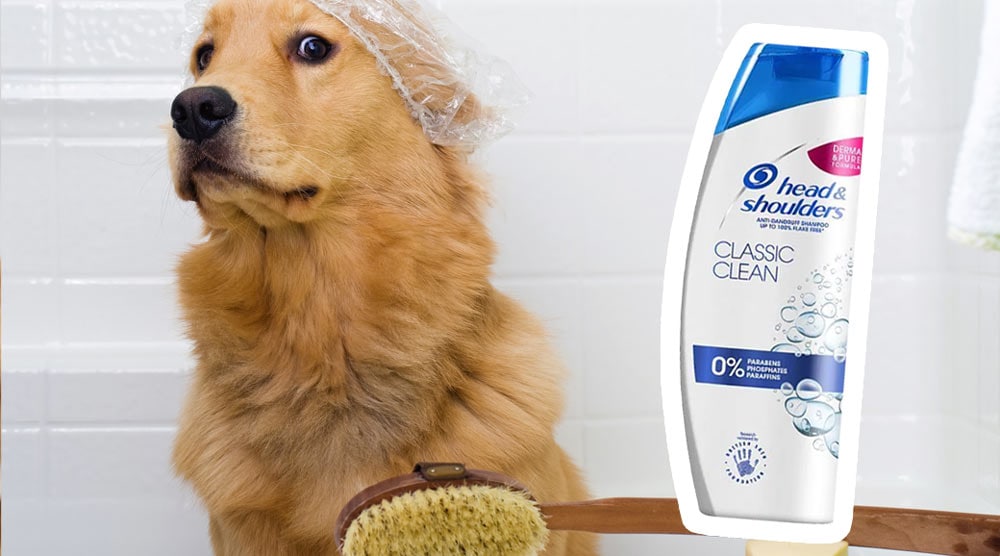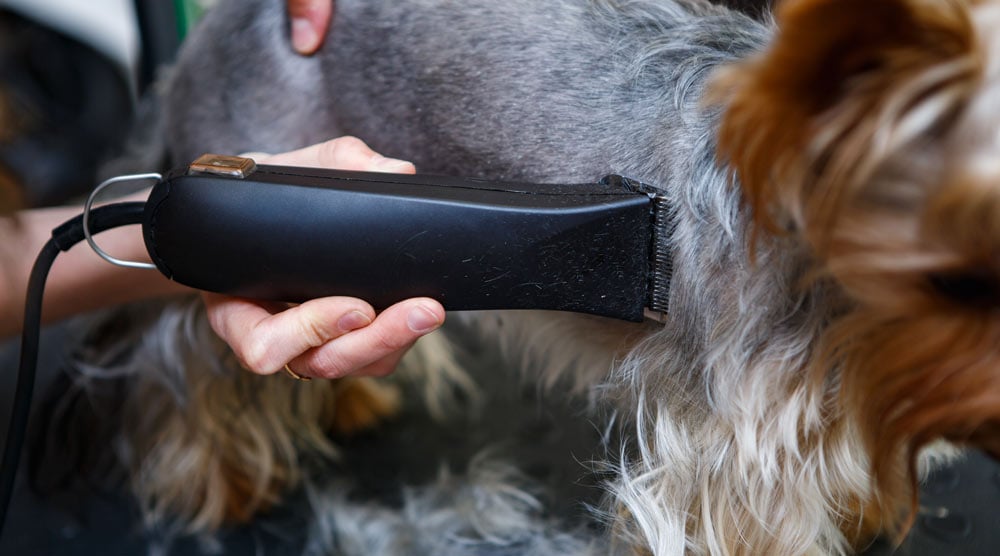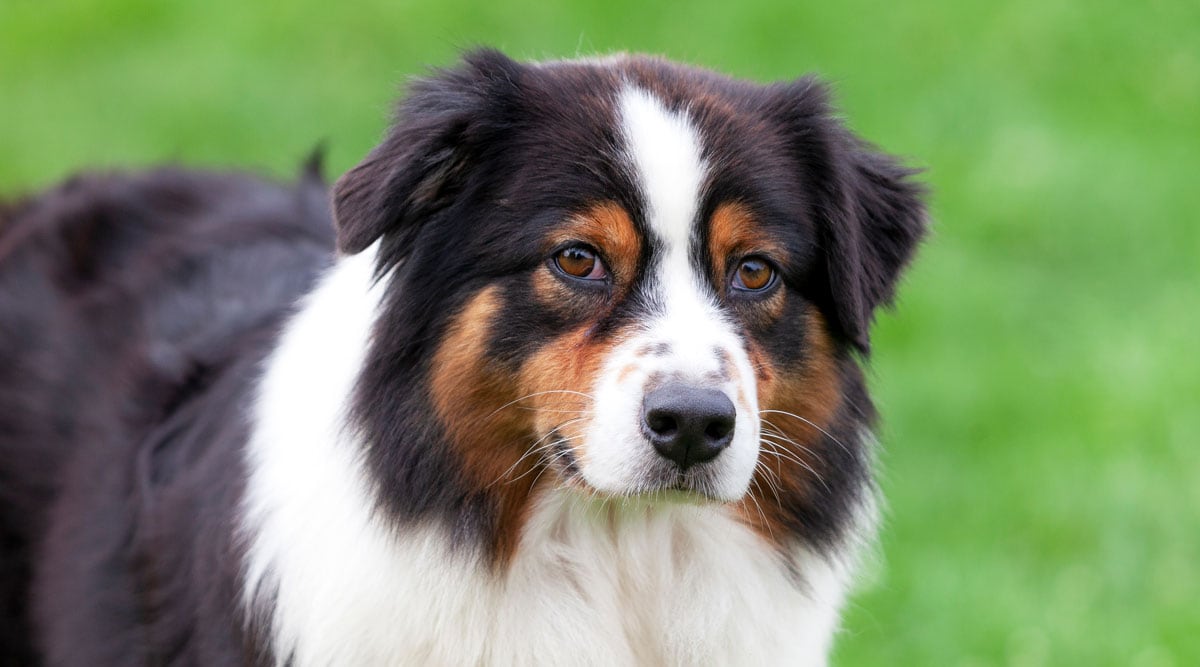Have you noticed your dog’s fur changing color in spots? Here are 11 potential reasons for this alarming situation.
Contents
- 10 Potential Reasons for a Dog’s Fur to Change Color in Spots
- 1. Color Changes Due to Aging
- 2. Stained Fur Due to Excessive Licking
- 3. Stained Fur Around The Eyes Due to Tears
- 4. Post-Clipping Alopecia
- 5. Healing After Surgery or a Wound
- 6. White Patches Due to Vitiligo
- 7. Fur Changes Due to Cancer
- 8. Colour Changes Due to Hormonal Imbalance
- 9. Coat Damage Caused by Parasites and Disease
- 10. Nutritional Deficiencies
- Are Spots of Color Changes Something to Worry About?
- Frequently Asked Questions
- Summary
A dog’s hair colour is caused by pigment, with a lack of pigment leading to white hair. Anything that affects pigmentation – such as age, injury, nutrition, staining, grooming or illness – can cause colour changes.
Let’s take a closer look at what can cause a dog’s fur to change color in spots.
10 Potential Reasons for a Dog’s Fur to Change Color in Spots
Disclaimer: A range of things can cause a dog’s fur to change colour, including serious diseases. It’s vital to seek veterinary advice if you notice skin or coat changes, as the treatment depends on the underlying cause.
1. Color Changes Due to Aging
The natural ageing process is a common reason for a dog’s fur changing color in spots.
Most puppies are born with a softer coat before gradually gaining their adult coat at around six months old. The coat may look patchy as puppy fur is replaced by coarser adult hair, but this is a normal part of your dog maturing.
Dogs also often experience a fur change as they move into their senior years. Two of the most common changes are:
- A greying of fur around the face or muzzle, although grey hairs can also appear elsewhere on the body.
- A slight lightening of the coat due to less pigmentation.
In short, it’s normal for a dog’s hair to change color as they move into different life stages.
This won’t always happen at a consistent speed across the whole body, leading to temporary patches of different fur colors.
2. Stained Fur Due to Excessive Licking
Dog’s saliva contains a natural pigment called porphyrin. Porphyrins can stain fur a red colour, especially if your dog repeatedly licks the same patch.
Staining is most common on the paws, although it can happen anywhere your dog is attracted to licking.
While it might seem harmless, excessive licking is nearly always a symptom of another issue. Therefore, taking your dog to the vet is essential to get an accurate diagnosis.
Some of the most common reasons for excessive licking include:
- Allergic reactions to environmental or food allergens
- Pain due to injury or illness
- Anxiety and stress (licking can act as a soothing behaviour)
- Parasites, such as mites, fleas, or ticks
- Foreign objects caught in the fur (such as grass seeds)
- Wounds
- Nausea or other gastrointestinal issues
Without treatment, excessive licking could lead to hair loss, skin irritation, infection, and even painful lesions called “lick granulomas.”
3. Stained Fur Around The Eyes Due to Tears
A dog’s tears also contain porphyrins. These can stain fur below the eyes, particularly if the dog’s tear ducts aren’t letting tears drain away.
While tear stains can happen to any dog, they are most visible on breeds with light fur. Dogs with lots of hair around the eyes may also be susceptible to staining.
In some cases, stains are caused by mechanical problems, such as small tear duct openings or large tear glands. But excessive or new tears can be a sign of a medical issue, including eye infections, ear infections, allergies, and even glaucoma.
For this reason, it’s important to contact a vet if you notice an increase in your dog’s tears or a new stain.
4. Post-Clipping Alopecia
Does your dog have a patch of differently coloured hair after a wound or surgery?
If so, then this may be due to a condition known as post-clipping alopecia, which can cause colour changes and even bald patches in dogs.
Post-clipping alopecia is most common in dogs with thick double coats, such as huskies and golden retrievers. Double coats have a dense undercoat of fur and a top coat of guard hairs.
These coats are genetically programmed to stop growing at a certain length. In other words, these dogs should not be shaved like other breeds – even in hot weather.
If the hair is shaved – either during grooming or for surgery – there’s a risk of patches growing back differently (or not at all).
Rather than cutting, the correct way to groom these dogs is to brush the coat regularly to release loose hair.
Note: Some dogs also change colour during shedding season.
5. Healing After Surgery or a Wound
Even if your dog doesn’t have post-clipping alopecia, hair may grow back a different colour after a wound or surgery.
A dog’s body naturally produces more melanin near a wound to speed up the repair process. Unfortunately, this can cause new hair to regrow darker than the rest of the dog’s coat.
This effect only occurs at the wound site. It’s often a temporary change but can sometimes be permanent.
6. White Patches Due to Vitiligo
If your dog has multiple white patches of fur, he may have a condition called vitiligo.
As we mentioned earlier, a dog’s hair is coloured due to pigmentation. Conversely, a lack of pigmentation causes both skin and hair to turn white.
Vitiligo is a rare condition that leads to depigmentation of patches across the dog’s skin. Along with skin discolouration, hairs growing from these patches become lighter due to the lack of pigment.
It’s not yet known why some dogs get this condition. Luckily, vitiligo isn’t dangerous and won’t cause your pet any pain. It’s also not contagious, so you don’t need to worry about your pet catching it from another dog.
Note: Vitiligo usually occurs when the dog is young. Depigmentation in older dogs is more likely to be due to age, stress, liver diseases, or hypothyroidism, so you should always get your vet to examine patches of color changes.
7. Fur Changes Due to Cancer
Sadly, many types of cancer can cause changes to a dog’s fur. Adrenal, thyroid, or pituitary cancer are amongst the most common, along with skin cancer.
Aside from fur colour, these cancers can cause other coat changes. For example, the hair may lose its glossy appearance and become brittle. Dogs with cancer may also experience hair loss, excessive shedding, and an increased amount of dandruff.
As a variety of illnesses can cause these symptoms, it’s vital to seek veterinary help if you notice changes to your dog’s coat.
Note: Cancer can also cause staining as a secondary symptom. If the cancer is causing a specific part of the body to be painful, the dog may lick it repeatedly, leading to rust-like staining.
8. Colour Changes Due to Hormonal Imbalance
Any condition that affects the body’s hormonal balance could cause a dog’s fur to change colour in spots.
An example is hypothyroidism, which can cause a variety of coat changes, including brittle hair, skin infections, and hair loss. Dogs with hypothyroidism may also have a reduced appetite and become lethargic.
9. Coat Damage Caused by Parasites and Disease
Parasites that affect the skin could cause your dog’s coat to change in patches. This could be due to a direct effect on the skin and hair, or because of lick stains.
Some examples include:
- Demodectic mange – This condition is caused by mites in the dog’s hair follicles. It can cause hair loss in patches and changes in the coat’s appearance.
- Tick bites – Tick bites don’t always cause irritation, which is why they often go unnoticed. When there is inflammation, however, the dog may lick the area, causing saliva stains. Unfortunately, ticks can also cause Lyme disease, so it’s essential to check your dog after each walk.
- Fleas – A flea infestation can cause excessive scratching, skin irritation, and bald patches. Prevention is much easier than a cure, which is why dogs should have ongoing flea treatment.
There is also a range of illnesses that could cause coat changes. We’ve already mentioned hypothyroidism and cancer, but other examples include bacterial skin infections, follicular dysplasia, black hair follicular dysplasia, liver disease, Cushing’s disease, and pemphigus foliaceus.
Dermatitis can also cause coat changes. This is skin inflammation that’s often secondary to another condition, such as parasites, allergies, or infections. It’s very uncomfortable for the dog, leading to excessive scratching and licking.
Considering there is such a wide range of parasites and diseases that can cause color changes, it’s vital to contact a vet for an accurate diagnosis.
Related Article: Why Are My Dog’s Ears Hot?
10. Nutritional Deficiencies
A lack of certain nutrients may cause a dog’s coat to change color. Nutritional issues may also cause dull hair, dry skin, pressure sores, and slow hair growth after clipping.
Nutritional deficiencies are most common when a dog is fed homemade food, as it can be hard to provide the right quantities of every nutrient. Low-quality commercial food may also not be nutritionally complete.
Some of the most important nutrients for your dog’s coat include:
- High-quality protein. Hair and skin require protein to grow, so a diet without enough protein may lead to coat changes.
- High-quality fats. Dogs need the energy stored in fats to maintain a healthy coat. If their diet doesn’t contain enough fats, the hair may lose its color and become brittle.
- Essential fatty acids. These fats cannot be produced by the body, but are required to prevent dry skin and hair mats.
- Copper. A lack of copper in a dog’s diet can lead to hair depigmentation.
- Zinc. Zinc deficiency can cause hair loss and skin cracking.
Note: Food allergies can also cause changes to a dog’s skin or coat.

Are Spots of Color Changes Something to Worry About?
A dog’s fur can naturally change color as they age. However, patches of color differences can also be caused by serious illness, so they shouldn’t be ignored.
Always visit a vet for a checkup when you notice skin or coat changes. Talk to the vet about your concerns and any other behaviour changes, as this can help with an accurate diagnosis.
Frequently Asked Questions
What Can Cause a Dog’s Hair to Change Color And Texture?
A puppy’s coat often changes color and texture when they reach approximately six months old. This is when they start to develop their adult coat, which is coarser than soft puppy fur.
There are also medical conditions that can cause a texture change though. So, you should always consult a vet if you have any concerns.
Why Would a Dog’s Fur Change From White to Brown?
There are many reasons for a dog’s fur to change from white to brown. Some of the most common include:
- Red staining due to porphyrins in saliva or tears
- Staining due to eating certain types of food
- Staining due to environmental factors, including mud or grass stains
- Inflammation due to allergies or injury
If the changes in fur colour are not caused by staining, you should visit a vet for a checkup.
Summary
Many environmental, medical, and dietary factors can cause a dog’s fur to change in spots.
These include the natural ageing process, hormonal problems, disease, nutritional deficiencies, and grooming.
While some of these causes are harmless, a dog’s fur changing color in spots should always be assessed by a vet. There are a variety of health problems that can cause coat changes, so an accurate diagnosis is essential.
Do you have any questions about a dog’s fur changing color in spots? Please let us know in the comments section below.




